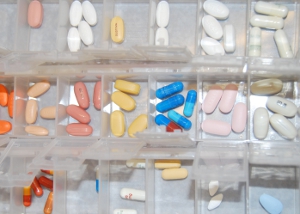The department estimates that the city of San Francisco is home to close to 66,000 men who have sex with men. The public health term includes men who identify as gay or bisexual, as well as those who identify as heterosexual but also have sex with men. As part of the survey, 474 men who have sex with men were tested for HIV in San Francisco.
Of the 21 cities where public health workers conducted surveys and HIV tests in bars, clubs and social organizations, Baltimore had the highest percentage of HIV-positive men who didn’t know they were infected: 73 percent. And Seattle had the lowest: 15 percent. By comparison, San Francisco had 19 percent.
Although Raymond said that public health officials don’t know what explains the disparities, he speculated that stigma around HIV infection might keep people from testing.
“We’re lucky to have a pretty good environment,” he said. “People see a benefit to knowing their status and then move to seek treatment.”
Treatment is beneficial not only to those who have found out they’re HIV positive. The powerful antiretroviral drugs used to treat HIV infection since 1995 have also been found to reduce the amount of virus in some patients’ bodies to the point where they no longer can transmit it to other people.
Research also shows that people who don’t know that they’re HIV-positive are more likely to contribute to new cases than those who do know their status.
“One estimate is that men with an unrecognized infection may be responsible for up to 3.5 times more infections than men who know they’re positive,” said Raymond.
The overall trend of HIV infection in San Francisco is encouraging, he said. The percentage of HIV-positive men has remained roughly the same since the last time the CDC conducted its survey, in 2004. The number of new infections in the city fell from 975 in 2006 to 621 in 2008, and the number of deaths of HIV-positive people has been decreasing too. In 2009, 138 HIV-positive San Francisco residents died, according to the city’s public health department, down from 288 in 2006, and a peak of 1,820 in 1992.
However, the nationwide results of the CDC survey show that disparities remain between different groups. The survey found that nationwide, 28 percent of African-American men who have sex with men are HIV-positive, while the same was true of 18 percent of the Latino group and 16 percent of the white group.
Among African-American HIV-positive men, 59 percent didn’t know their status, and 46 percent of Latino men were unaware of theirs. This is compared to 26 percent of white HIV-positive men. San Francisco hasn’t broken down the city’s numbers by ethnicity yet.
Eduardo Morales, executive director of AGUILAS, a San Francisco nonprofit that works with some 1,500 Latino men who have sex with men, said that preventing HIV infection requires more than testing.
“When it comes to the actual situation you’re confronted with, using the condom and protecting yourself becomes a challenge,” he said. “You could be under the influence, or you could be depressed. These co-factors affect people’s judgment.”
AGUILAS provides individual counseling and discussion groups to help men reduce their risk of becoming infected.
But Morales warned that CDC funding for his organization and groups doing similar work has all but dried up, even though Latinos, which make up 15 percent of the national population, suffer from 20 percent of HIV infections.
“They (the CDC) said their top priority is Latino men, but they didn’t fund us,” he said.
Video:
Radio:
Listen to KQED’s Health Dialogues episode about HIV/AIDS in California
Listen to QUEST’s story about The Graying of HIV
38.16047628099622 -121.47445678710938
 Public health officials stress the importance of testing because treatment with antiretroviral drugs may prevent new infections by reducing the amount of virus in the body. (Credit: Jenny Oh)
Public health officials stress the importance of testing because treatment with antiretroviral drugs may prevent new infections by reducing the amount of virus in the body. (Credit: Jenny Oh)